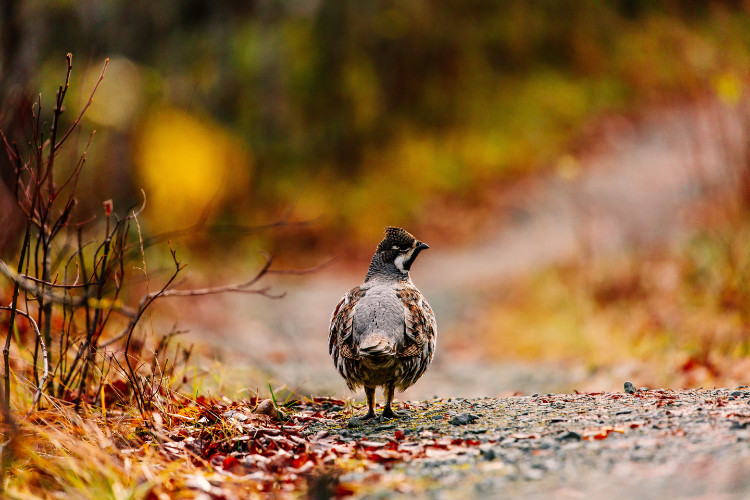
Hazel cock - Forst Eibenstein
The hazel grouse, also known as black grouse or capercaillie, is a fascinating bird native to the forests and mountainous regions of Eurasia. With its imposing appearance and distinctive courtship behavior, the hazel grouse fascinates nature lovers and birdwatchers alike.
The hazel grouse is a large forest bird and belongs to the pheasant family. Male hazel roosters are impressive, with showy plumage and impressive features. They have a black upper side with white spots that give them perfect camouflage in the dense forest garb. The wings are brown and the underside is white to cream. The most striking feature of the male, however, is his magnificent tail, which ends in a fan-shaped display of white and black feathers.
While the male is impressive, the female hazel grouse have rather inconspicuous plumage. They are earthy tones to better camouflage themselves in their natural environment. This camouflage helps them stay protected during the breeding season and while raising their young.
The hazel cock is especially known for its spectacular courtship behavior. In the early morning hours of spring, male hazel grouse congregate in specific locations known as courtship arenas. Here they perform a stunning display to attract the attention of females. Courtship includes loud, rhythmic wing beats and calls, accompanied by synchronized dances and impressive leaps into the air. This spectacular spectacle is unique and has made the hazel cock a symbol of the ritual of mating in the animal world.
Hazel grouse are mainly herbivores and feed on buds, leaves, berries, seeds and insects. They specialize in collecting buds from shrubs and trees, especially hazel bushes, which is how they got their name.
The habitat of the hazel grouse is predominantly coniferous and mixed forests, where it finds shelter and food. They prefer undisturbed forest areas where they have plenty of hiding places. The hazel grouse is a site-faithful species, which means it usually stays in a particular area and does not migrate far. This preference for specific habitats makes the preservation of these forests all the more important for the conservation of this fascinating bird species.
Although the hazel grouse is not an immediate threat, it is declining in some areas. The destruction
The loss of habitat due to deforestation and intensive agriculture, as well as hunting, have led to a decline in populations. Therefore, conservation measures such as the establishment of protected areas and the promotion of sustainable forest management and hunting practices are being taken to conserve the hazel grouse population.
The Hazel Grouse is undoubtedly a remarkable bird with its imposing appearance and spectacular courtship behavior. By working to protect its habitats, we can ensure that this majestic bird continues to enrich and fascinate our forests.
